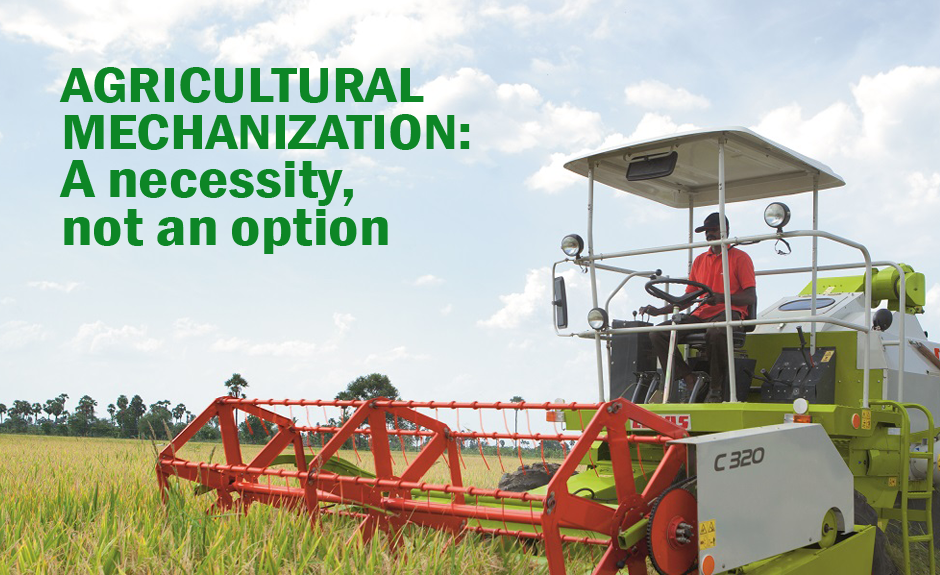Mechanization of agriculture is an essential input in modern agriculture. It enhances productivity, besides reducing human drudgery and cost of cultivation. Mechanization also helps in improving utilization efficiency of other inputs , safety and comfort of the agricultural worker , improvements in the quality and value addition of the produce. Efficient machinery helps in increasing production and productivity, besides enabling the farmers to raise a second crop or multi crop making the Indian agriculture attractive and a way of life by becoming commercial instead of subsistence.
This will call for greater engineering inputs which will require developments and introduction of high capacity, precision, reliable and energy efficient equipment. Looking at the pattern of land holding in India, it may be noted that about 84 % of the holdings are below 1 ha. There is a need for special efforts in farm mechanization for these categories of farmers to enhance production and productivity of agriculture.
1.Promotion and Strengthening of Agricultural Mechanization through Training, Testing and Demonstration: Aims to ensure performance testing of agricultural machinery and equipment, capacity building of farmers and end users and promoting farm mechanization through demonstrations.
Demonstration, Training and Distribution of Post Harvest Technology and Management (PHTM): Aims at popularizing technology for primary processing, value addition, low cost scientific storage/transport and the crop by-product management through demonstrations, capacity building of farmers and end users. Provides financial assistance for establishing PHT units.
Financial Assistance for Promotion of Mechanized Operations/hectare Carried out Through Custom Hiring Centers: Provides financial assistance on per hectare basis to the beneficiaries hiring machinery/equipments from custom hiring centers in low mechanized areas.
6 key industry trends in agricultural machinery Adoption of sustainable mechanization Issues surrounding natural resources, water supply, and soil degradation has caused manufacturers to look towards more advanced technologies that are more sustainable. Major players in the agricultural machinery market have put out calls to the UN Food System Summit to make production more efficient. It is likely that the trend will continue for a significant amount of time. Accommodating for the growing demand for food in the coming years is likely to be significantly more difficult due to numerous environmental effects on farming. Thus, agricultural machinery will likely go over a small revolution, favoring different equipment than before.
Additionally, government initiatives are likely to subsidize the change to sustainable farm equipment. Agriculture remains at the forefront of most countries and governments as the industry props up nearly everything else. Therefore, looking into sustainable farm equipment is definitely the right way to go.
Precision agriculture :-
As the agricultural machinery industry stands at the forefront of technological innovation, it’s no surprise that precision agriculture is one of the key trends. While implementing precision farming requires high tech equipment, farmers are not scared away.
Tools like in-field sensors and unmanned aerial vehicles (frequently known as drones) allow farmers to really focus on the minute details and requirements of particular crops. Additionally, data fed from those tools can deliver insights into possible improvements in plant allocation and other factors.
Precision farming is likely to become the future of agricultural production. Major companies like Monsanto and Agco Corporation have begun implementing precision farming and prescriptive-planting that allow them to optimize the cultivation of food crops.
Interest in robotics :-
While widespread adoption of robotics by major companies in the agriculture industry has been slower compared to others, there is reason to believe that the interest will surge quickly. Farming machinery has reached size limits in many countries, limiting further improvements. Thus, farmers will have to turn to machine learning and artificial intelligence solutions.
Additionally, robotic devices and machines can perform in adverse conditions, increase operations efficiency, and agricultural output, making them a desirable choice. Robotized equipment can perform during night hours and weekends, speeding up manufacturing processes and saving production costs.
It’s expected that the rising market demand for agricultural products will more or less force many farmers into adopting robotics for their operations. Due to the highly competitive landscape of the industry, lagging even slightly behind can cause farmers to go out of business.
Autonomous workforce and remote solutions :-
The pandemic put a strain on many industries with heavy machinery being no exception. Nearly every company, regardless of industry, started looking into ways to perform its operations remotely. These technologies enabled them to discover new management principles.
One of these principles that has become a highly industry trend is the creation of autonomous workforces. Essentially, major companies in North America and other places across the globe have realized that more overhead isn’t necessarily better. Employees can perform complex tasks on their own as long as the correct data and tools are provided.
Thus, businesses across many industries are looking towards remote workforce solutions that can empower their employees. Field service solutions and other technologies can provide field workers and farmers with all the data they need in real time. Instead of having to constantly communicate or do other low-quality tasks, workers can fully focus on delivering value.

